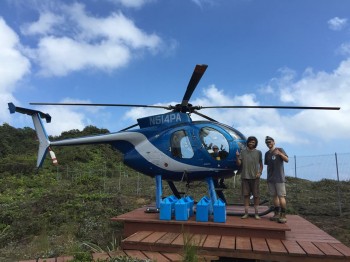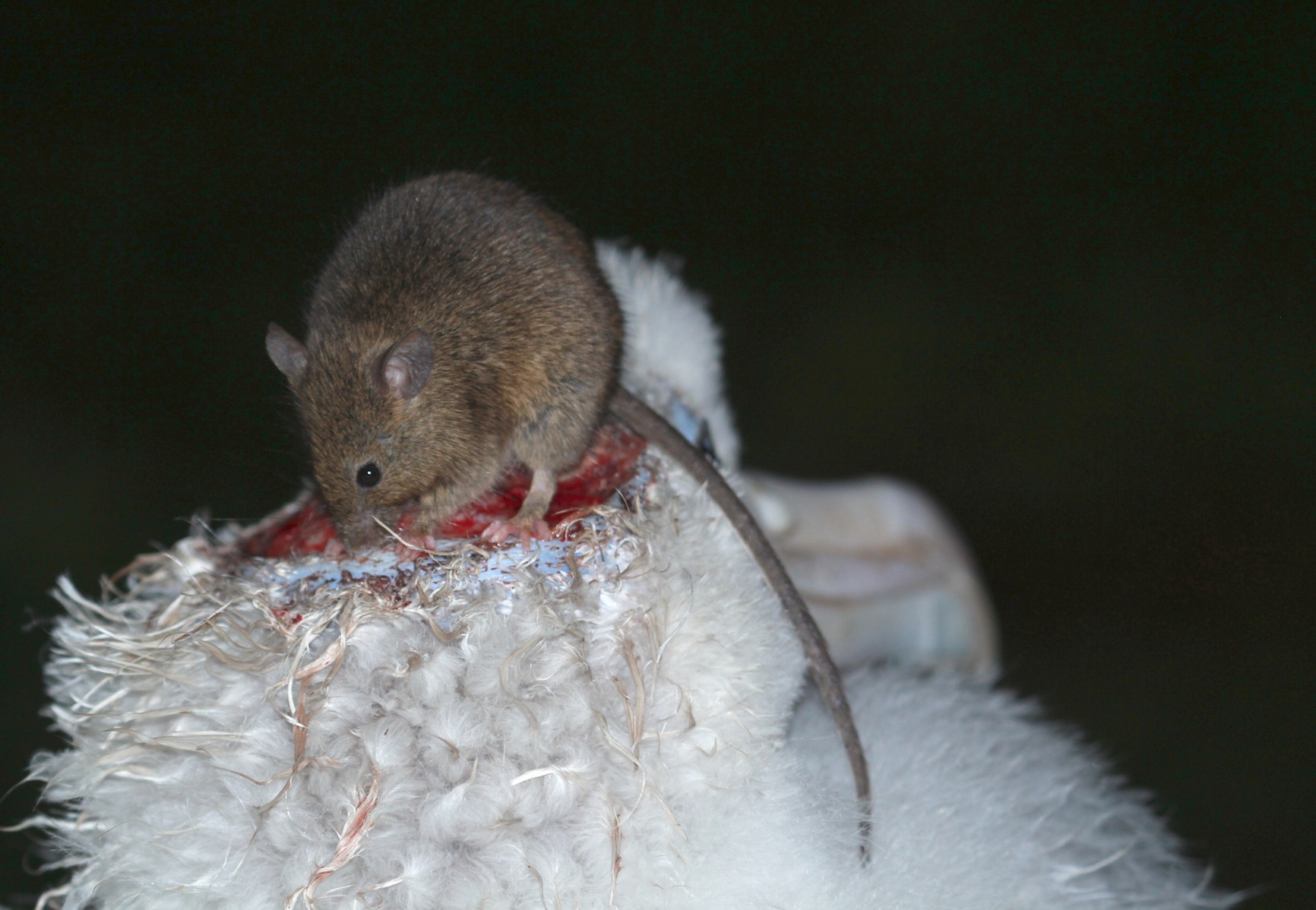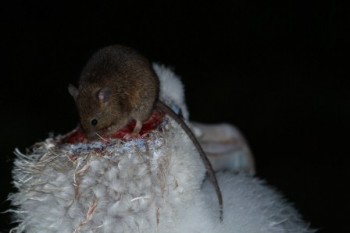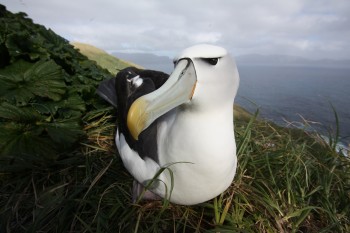Ten Vulnerable Hawaiian PetrelPterodroma sandvicensis chicks were flown recently by helicopter from their montane beeding area to a new colony protected by a predator-proof fence at Kilauea Point National Wildlife Refuge on the Hawaiian island of Kauai.
In the early morning, two teams were dropped by helicopter onto mountain peaks located in the Hono O Na Pali Natural Area Reserve within the Na Pali-Kona Forest Reserve. There the teams headed for 10 nest burrows that had been monitored throughout the breeding season.
The chicks were removed, placed into pet carriers, and hiked up to the tops of peaks where the helicopters picked them up. The chicks were then flown to Princeville Airport where the animal care team on the ground assessed their health. From there, they were driven to the recently completed predator-proof fence in the Nihoku area of the Refuge.
Surrounded by fine mesh stainless steel fencing, the enclosure at Nihoku protects the birds from predators; the area inside the enclosure has recently been partially restored with native vegetation. Seabird-friendly nest boxes, specifically designed to mimic natural burrows, have been installed.

One of the 10 translocated Hawaiian Petrel chicks

Hawaiian Petrel chicks in boxes ready for loading
Photographs by Andre Raine
Hawaiian Petrel chicks imprint on their birth colony the first time they emerge from their burrows and see the night sky. Since the chicks were removed from their natural burrows before this critical imprinting stage, they will imprint on the Nihoku area, returning to the site as adults. In the meantime, human care-takers will hand-feed the young birds a slurry of fish and squid and carefully monitor their growth until they fledge.
The translocated Hawaiian Petrels chicks have now started to emerge from their burrows and look around at night. They typically do this for two weeks to imprint on their location, and then after that they will leave to sea for the first time.
The above has been adapted from the website of Pacific Rim Conservation. Read an earlier ACAP Latest News item on the translocation here.
STOP PRESS: Two of the ten chicks successfully fledged on the night of 13/14 November (click here).
John Cooper, ACAP Information Officer, 16 November 2015

 English
English  Français
Français  Español
Español 




